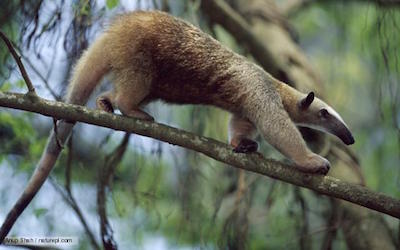PTE考生目前最大的问题之一就是练习题缺乏。除了有限的基本官方书(PLUS,Testbuilder, OG)之外,就没有题了。很多英语基础不是很扎实的同学很难找到练习材料。墨尔本文波雅思PTE培训学校专门为墨尔本,悉尼PTE考生准备了适合PTE听力阅读练习的科学60秒。各位PTE同学可以练习PTE听力中的summarise spoken text和PTE口语中的retell lecture,PTE听力口语-科学60秒-Frosty Moss练习记笔记技巧和复述。废话少说,下面开始:
Illustrated Story Teaches Young Kids Natural Selection
听力内容:
60秒科学节目(SSS)是科学美国人网站的一套广播栏目,英文名称:Scientific American – 60 Second Science,节目内容以科学报道为主,节目仅一分钟的时间,主要对当今的科学技术新发展作以简明、通俗的介绍,对于科学的发展如何影响人们的生活环境、健康状况及科学技术,提供了大量简明易懂的阐释。
Once upon a time, there was an animal called a pilosa that caught insects with its trunk. Some pilosas had wide trunks. Others had skinny trunks. When habitat changes caused their dinners to tunnel underground, pilosas with wide trunks began to starve and die. The pilosas with thin trunks could still reach the bugs. So they stayed healthy and had babies that also had thin trunks. Eventually, all pilosas had skinny trunks and they lived happily ever after. Or they might have, if they were real.
Pilosas were made up by researchers who were exploring whether kids could grasp the concept of natural selection. They found that parables like the plight of the pilosa enabled even kindergartners to get evolution. The study is in the journal Psychological Science. [Deborah Kelemen et al, Young Children Can Be Taught Basic Natural Selection Using a Picture-Storybook Intervention]
Children enjoy explanations, so much so they often invent their own°™like, giraffes must grow long necks so they can reach high branches. But after reading about the pilosa, all of the seven- and eight-year olds in the study could correctly explain that the species changed over time because the better-adapted creatures outreproduced those that were less fit.
Maybe early exposure to such complex concepts could help science literacy evolve.
–Karen Hopkin





